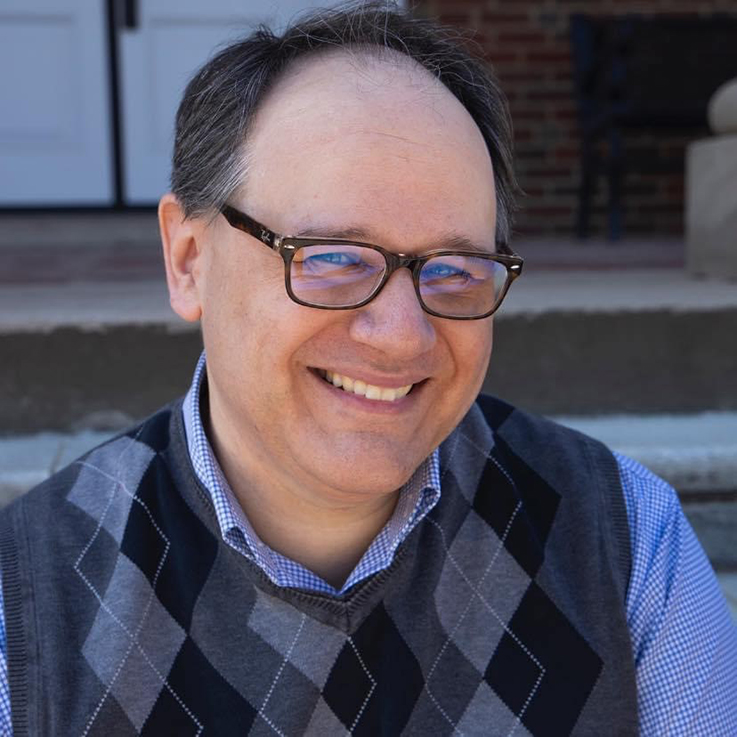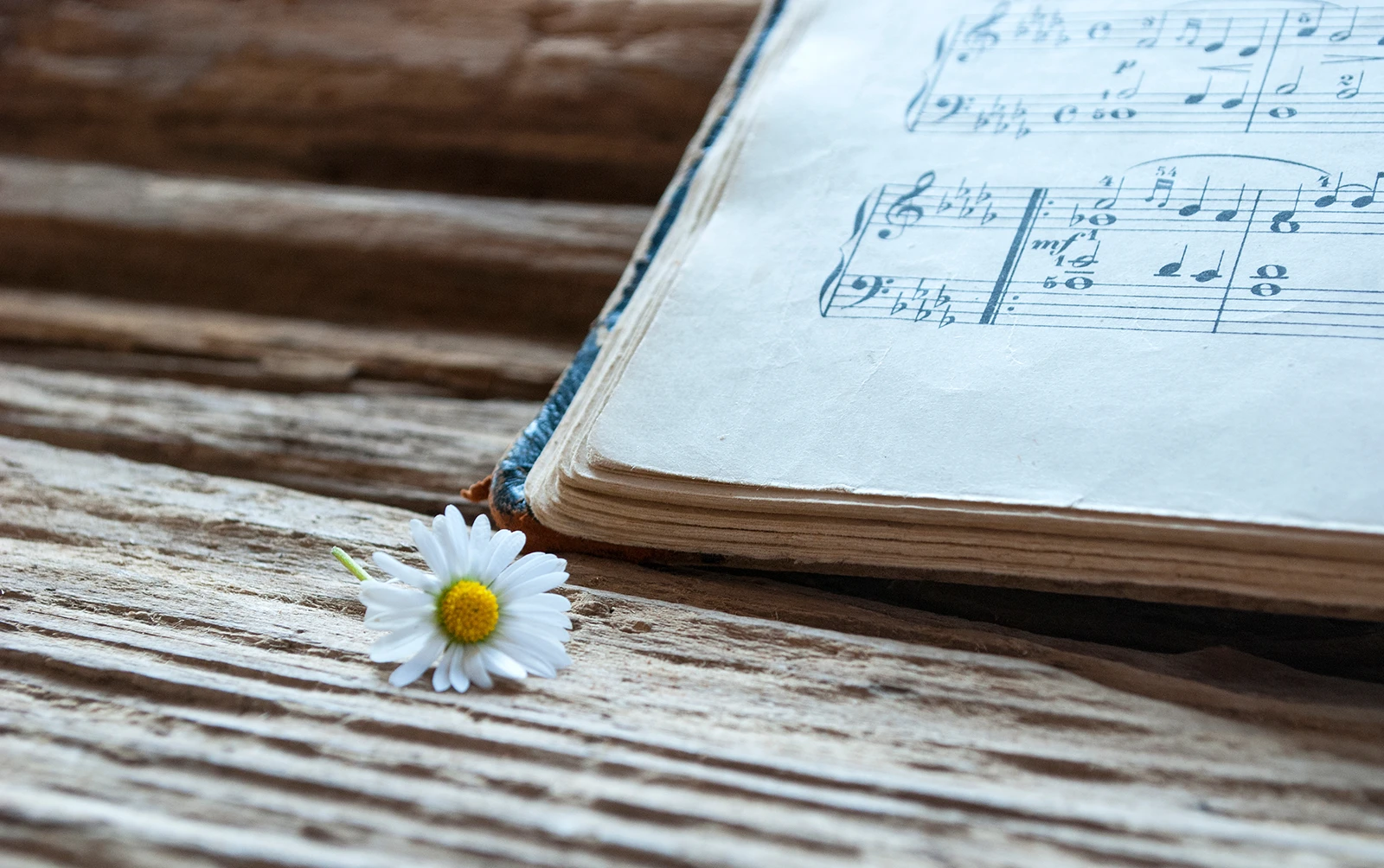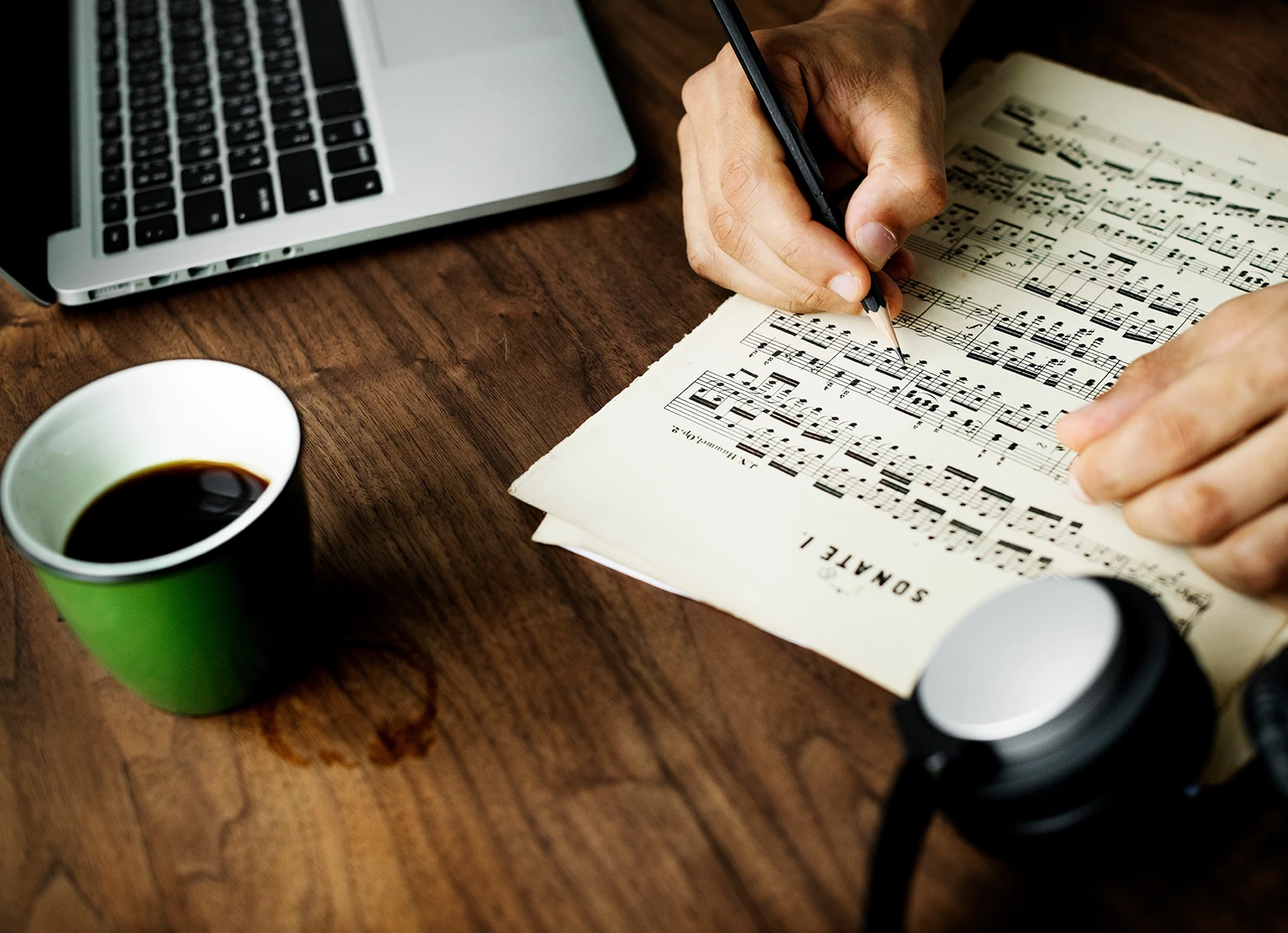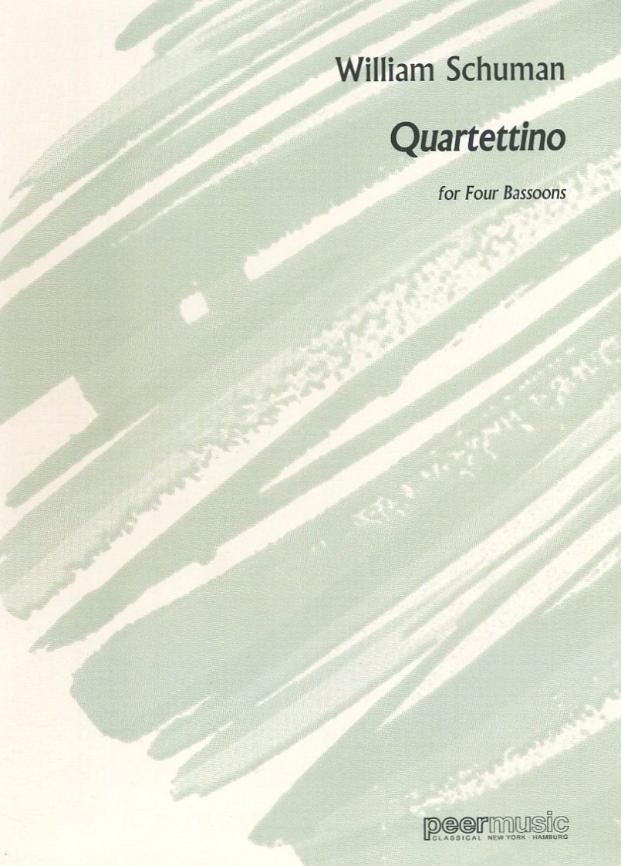As a young clarinetist and bassoonist growing up in rural western Pennsylvania, I was deeply fortunate to have two outstanding band directors that mentored me from elementary band through high school. Both of them provided me with the inspiration, confidence, and drive to become a music educator thanks to the exceptional modeling that they provided for me at an early age. They were very different in their approaches to their role as a conductor/teacher, however, their strengths complemented each other so well that they created a high-quality music program in a sparsely populated community. Thus began my early fascination with the rehearsal process and it’s impact upon a community of musicians.
I am positive that my journey from student, to student teacher, to teacher, is not unique. I believe that all of us as music educators have been deeply influenced by one, or more than one, large ensemble conductor during our formative years. I am incredibly fortunate that I had excellent and inspiring conductors from my elementary band years all the way through my days in graduate school. I continue to be inspired by my colleagues where I teach, and through the incredible teachers that I meet during my travels.
As process-driven educators, I think it is healthy for us to take a step back and assess what we do in the classroom on a periodic basis. It not only keeps us fresh, but it also lets us take advantage of ideas, techniques, and concepts borrowed from friends, colleagues, and the top minds in our profession. I freely admit that about 95% of what I do in rehearsal is “stolen” from others. I am able to rationalize this by telling myself that I try to steal only from the best! It reminds me of a quote: “The definition of creativity is the ability to be able to hide your sources.”
As I take a look back at almost 25 years of teaching, I came to realize that many of the concepts that we use in the classroom correspond to what we do in the form of an acronym – R.E.H.E.A.R.S.E. I thought it might be interesting to investigate these ideas one by one as a way of taking stock of what we do, and also planning for the future. Here we go!
R – Reveal the genius of the composer
As music educators, we are all well aware that selecting repertoire for our students is perhaps the most important thing that we do for our students. In essence, we are choosing our textbook for the entire year. If you have never read H. Robert Reynold’s article, “Repertoire Is the Curriculum”, I highly recommend that you add it to your reading list. One of the points that I take away from this article is that when we choose a particular work for our ensemble, we are also choosing not to program hundreds of other works that could have filled that spot.
Every time that I begin a new concert rotation with the IUP Symphony Band, I can feel the words of Frank Battisiti, former director of bands at New England Conservatory, hanging over my head – is our rehearsal going to place where music education takes place, or is it going to be a “drill shed”? I firmly believe that when we are teaching a new work to our ensembles, we teach the work as a comprehensive whole, rather than perfecting the composite parts that make up the composition. This is not to say that we should avoid eliminating error as part of our rehearsal process – far from it. However, if we focus solely on eliminating error, we as educators are falling short of showing our students how the compositional process works. Furthermore, we are depriving our students their role in the creative process if we take this “right vs. wrong” approach. If it is our duty to select the best repertoire possible for our students, than I also believe we have a responsibility to share with our students what attracted us to that repertoire, and then share with them the genius of that composer. If we are going to ask the third clarinets to play short, why? Is there a reason why this composer wrote several duets for alto saxophone and flute? The answers to these questions leads to greater understanding of the work by our students. During a rehearsal cycle, I will refer to and/or play recordings of other works that were written by a particular composer to demonstrate similarities in their style between different works, as well as changes that appeared in their music over time. If we all subscribe to the concept that the purpose of rehearsal is not to learn our own part, but to learn everyone else’s part, we will be well on our way to bringing a holistic view of the composition to our students.
E – Eliminate error through the lens of education and expression
One of the finest books that I have ever read that deals specifically with the rehearsal process is The Musician’s Soul by James Jordan, who is a member of the music faculty at Westminster Choir College. If you have not had the opportunity to read this book, I highly recommend it’s specific insights into the relationship between the conductor and the ensemble. Jordan states that during the rehearsal process, every conductor enters a rehearsal with an ideal sound for a particular work, assuming that they have taken the time to study the score in great detail. Early in the rehearsal cycle, the sound that the ensemble produces will likely not match the conductor’s ideal sound. In that split second, the conductor must make a choice on how they will respond to this stimulus. They can either respond as an educator with care and concern for their students, or they can make choices such as anger, sarcasm, distrust, and fear. While this is a bit of an oversimplification of Jordan’s writing, it drives home the fact that we must maintain our humanity during the rehearsal process and make the education of our students our top priority.
Once we have located something that we want to adjust in rehearsal (tone, articulation, intonation, etc.), finding a way to relate that change to the musical expression of the work is often the most effective and meaningful to the student (this was stolen from Craig Kirchhoff, retired director of bands at the University of Minnesota). I often find that this is the hardest thing to do in the “white heat” of rehearsal, when we have a limited amount of time to work and many things to do. It is always easier to say, “louder, shorter, softer, louder, sharp, flat, etc.”, get the results that we are looking for, and move on. Personally, I am very guilty of not taking the time to relate a change to musical expression. However, I have seen time and time again that these moments spent in rehearsal are well worth the time and effort to our students’ education.
H – Hear what you see, and see what you hear (Score Study)
I think another point that we can all agree upon is that mastery of the score is the key to any successful rehearsal and performance. There simply is not a substitute for knowing how a piece is put together, and how we will relate that knowledge to our students. If you are like me, the usual enemy to completing this task before the first rehearsal is time. The pressures and demands of our everyday lives frequently wreak havoc with even the best of intentions. The question then becomes, how do we thoroughly study a score with the limited time that we have available? Fortunately, there are many resources for the music educator that can help with this very sophisticated task. One of the best books that I know, and that I recommend for my students is the Guide To Score Study by Frank Battisti and Robert Garafalo. In this text you will find a treasure trove of ideas for studying your next set of scores. I would also recommend the Teaching Music Through Performance Band series, as well as several volumes of Rehearsing the Band.
E – Empathize and energize
One of the most important lessons that I learned early in my teaching career, is that our students have lives outside of music, and sometimes these lives present challenges that we cannot comprehend. Family issues, illness, financial troubles, academic difficulties, etc. do not stop when they enter our classroom. One of the biggest favors that we can do for our ensembles is to maintain our sense of empathy as we teach. By suggesting this, I am not saying that we abandon our classroom management or change our standards. What I am suggesting, is that we maintain our humanity and vulnerability as we teach (another powerful lesson from The Musician’s Soul).
Working in tandem with this, is freely showing our passion, zeal, and enthusiasm for our students, the music, and the art that we are creating together. When our students witness our passion, I contend that it adds fuel to the gas tank in our rehearsal and energizes everyone. If we are trying to get more miles per gallon (i.e. the most efficient rehearsal), freely share your passion for the music and your students.
A – Advocate for the composer
One of my favorite quotes about advocating for the composer is by Don Wilcox, retired director of bands at West Virginia University: we should become a pizza delivery boy for the composer! Unless we have the opportunity to communicate with a composer during a rehearsal of their work (which has become much easier through Skype, FaceTime, etc.), we spend most of our time in front our ensembles trying to honor the composer’s wishes that he/she has left for us via the printed notation in the score. Even in the best of situations, this can be a complex and confusing task. While we are all aware of the limits of musical notation, this gives us the unique opportunity to combine our and our ensemble’s creativity with the artistic intent of the composer. In other words, if we think of our rehearsal as a laboratory to try new ideas, we can come up with several possible interpretations as opposed to binary “right” and “wrong” solutions. I often compare this to painting by the numbers. When some of us were younger, we were given a “paint by the numbers” kit, which consisted of a black and white drawing filled with numbers, and a set of paints that would be used to fill in the corresponding numbers. While I am sure that our loved ones were thrilled with what we were creating when we were younger, were we creating great art? It is my opinion that were replicating someone else’s art, and not creating an original work of our own. If we can strive for creation balanced by the composer’s intent, then our students will be able to experience the essence of the composer and create something original as well.
R – Remember the purpose that the repertoire serves
This could be a whole article by itself! I have previously written about forming a philosophy of programming for our ensembles several months ago, but when we consider the transformative power that our art can have on today’s young people, choosing the right music is the most important thing that we do every year. Some questions to ponder:
Your expectations in rehearsal and performance will be determined by the repertoire. Therefore, selecting repertoire that is appropriate for the ensemble is the most important decision that we make.
Are we as conductors selecting repertoire that allows us, as well as our students, to have an aesthetic experience?
Does the repertoire that we are selecting affect us and our students in such a way, that other individuals outside our ensembles notice the profound changes within us?
Are we selecting repertoire that allows us to have a “better band”, or allows our students to experience all of the facets of a complete music education?
Regardless of the abilities of the students that we teach, we must select repertoire that aesthetically affects us so that we can bring that passion, dedication, and joy to our students.
S – Seek out the best models for your ensembles and ensemble members to emulate
I can still remember from my instrumental methods classes about the use of modeling as a powerful teaching tool. Rarely does a bassoon lesson, conducting class, or rehearsal go by that I do not demonstrate a sound, gesture, or concept for my students. As I try to continually grow as a teacher and performer, I am constantly searching for the best models to emulate. Whether it be performances of the University of Michigan Symphony Band, or the sounds of the sounds of Canadian bassoonist Christopher Millard, these artists continue to inspire me as well as provide excellent models for my future development.
With the creation of YouTube, Spotify, etc., we now have access to a treasure trove of audio and video recordings that demonstrate the best that the music world has to offer. I use these resources frequently in my private, classroom, and ensemble teaching to demonstrate the best aural models the world has to offer. Most recently, I have become aware of videos available by the Berlin Philharmonic called the Digital Concert Hall. While this service is available for a fee, the resources found at this website are amazing! I highly recommend them to you.
E – Enjoy!
No doubt, we are living in challenging times to be an arts educator. We are constantly receiving messages in the form of budget cuts, furloughs, competition for students with AP classes, and a laser-like focus on STEM classes that can make even the most seasoned and enthusiastic educator feel a bit deflated. Despite all of this, I still contend that we have the best jobs in the world – practicing our chosen art and helping to shape young people’s lives so that they can experience a full education in what it means to be human. The challenge is to show this enthusiasm on a daily basis. Perhaps it is the eternal optimist in me, but I believe that if we look hard enough, we can see the fruits of our labor every single day. Whether it be one of our former students that becomes a band director and influences generations of students, or seeing one our students that gained confidence, self-esteem, and pride, through being in our program. Success stories are all around us if we look hard enough.
I want to close with one of my favorite quotes by Marian Wright Edison – “Service is the rent that we pay for being. It is the very purpose of life, and not something you do in your spare time.” A career in music is spent in service to others. We serve the composer with our labors to realize their artistic vision; we serve our students with our dedication to their intellectual, emotional, and spiritual growth; and we serve our community by bringing the life changing power of art into the public square.
Let’s go out and have a great spring of music making!







